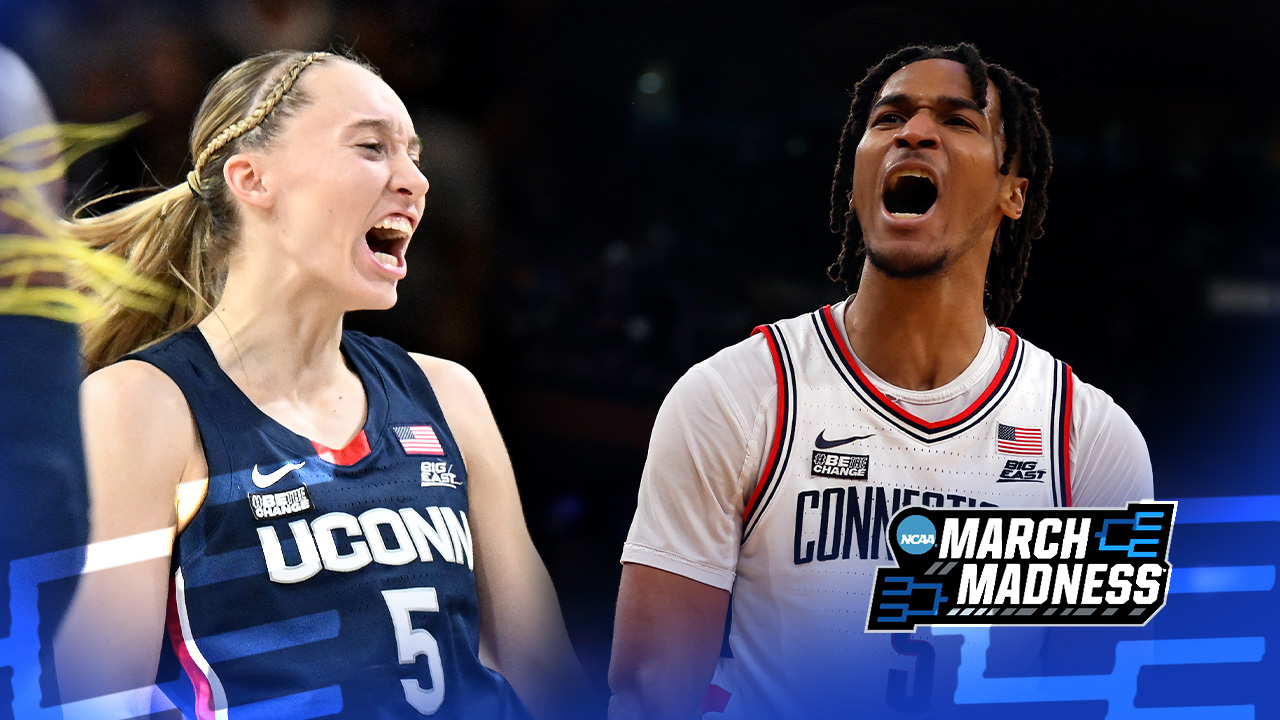

University of Connecticut head coach Dan Hurley didn’t mince words when asked about the challenges of repeating as national champions—a feat unseen in the men’s NCAA Tournament since Florida did it in 2006 and 2007.
“When you play at UConn, it’s pressurized,” Hurley told reporters last week before the Huskies’ first March Madness game. “So, when you get to these moments like the NCAA tournament, the lights are super bright… We are used to playing as a big target. We perform well under pressure.”
The top-seeded Huskies sprinted through the first two rounds of the tournament to reach the Sweet 16. They’re not alone. Led by Hall of Fame head coach Geno Auriemma, UConn’s women’s team has also reached the school’s 30th straight Sweet 16 in a quest for a 12th title.
UConn is the only school to have won both Division I basketball titles in the same season—which it accomplished in 2004 and 2014—and it continues to serve as a prime example of the kind of value premier basketball programs can have, even in this transformative era when college football is dictating so much across the athletics landscape, from TV contracts to conference realignment.
“I would say its biggest value for our university is the overall brand recognition,” UConn athletic director Dave Benedict said in an interview. “Obviously basketball schools don’t necessarily benefit as significantly from a financial standpoint [as big-time football programs] but certainly from a brand recognition standpoint.”
The Huskies compete in the Big East for many sports, including basketball, but are independent in football. UConn ranked outside the top 70 public FBS schools in football ticket sales in fiscal year 2023 (just $1.7 million) but was 13th in men’s basketball ticket sales ($6.3 million) and first in women’s basketball ticket sales ($2.8 million).

“If you look at the history of the Big East, it has really shown over time that basketball can thrive, whether you have big time football or not,” Big East senior associate commissioner Dan Leibovitz said in an interview. “If you get the right coach and resources in place, you know what can happen. You don’t need 100 players in basketball, just a roster of 13 scholarships. … There’s really no ceiling to what [UConn] can accomplish.”
The storied history and championship tradition of the men’s and women’s basketball programs was one of the leading factors that attracted the Big 12 Conference, which reached out to UConn to potentially lure the Huskies away from the basketball-first Big East Conference last year. It’s part of Big 12 commissioner Brett Yormark’s initiative to take the conference global through one of the world’s most popular sports.
While the Huskies never jumped—the Big 12 has expanded with BYU, UCF, Cincinnati and Houston, and will add Arizona, Colorado, Utah and Arizona State next season—the movement and outside interest speaks to how UConn athletics has managed to use its basketball program at a position of strength among football-centric schools.
It’s not, however, without some financial challenges. UConn is one of the most heavily subsidized public FBS athletic departments in the country. In fiscal year 2023, the department reported $38.7 million in total in subsidies from student fees and the academic side of the school, which places the Huskies in the top 10. That was 43% of the department’s operating expenses, which were $91.9 million.
On the court, the Huskies appear to be reaping the benefits of their decision to leave the American Athletic Conference to rejoin the Big East nearly four years ago. After seven years in the AAC, the basketball program wasn’t getting the national spotlight that its fanbase was accustomed to as a powerhouse built by former UConn coach Jim Calhoun. “That had gone away,” Benedict said. “Fortunately, we had the opportunity to make that decision and get back to a league we felt that fit much better and here we are.”
Some naysayers were scratching their heads wondering why UConn would return to a conference that left the Huskies out in the cold during the last round of major realignment more than a decade ago. But UConn instead chose to prioritize basketball, getting out of the football-focused AAC to return to the league where it an original member.
“I would like someone to tell me now that it wasn’t the right decision,” Benedict said. “It was. It doesn’t mean it’s perfect for every program on our campus, but ultimately it was about the opportunity to reposition our men’s basketball program in a way to make sure we’re nationally relevant.”
